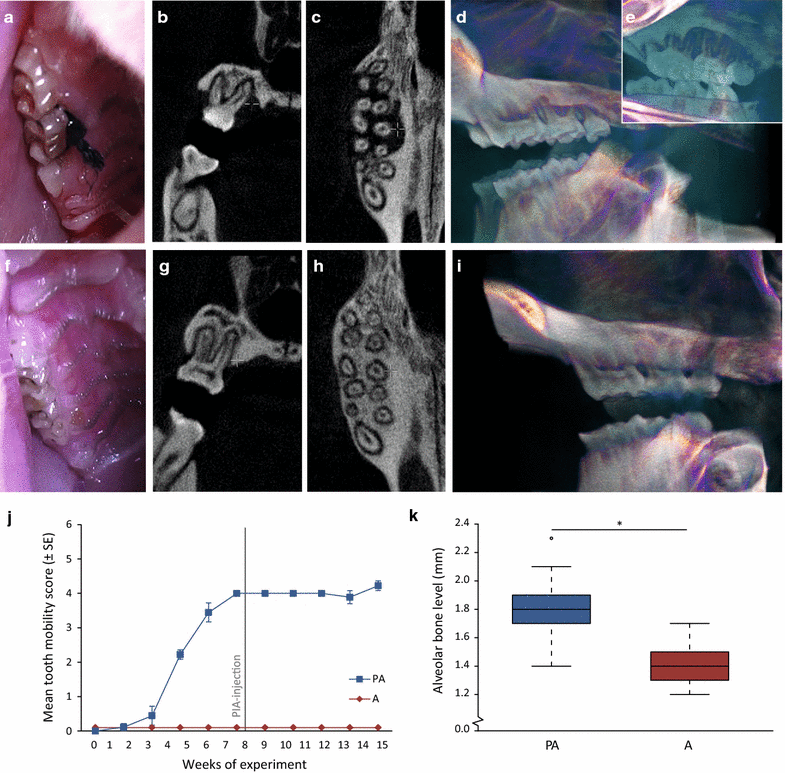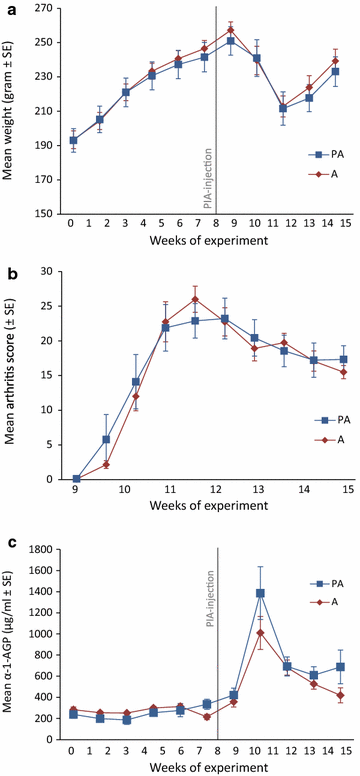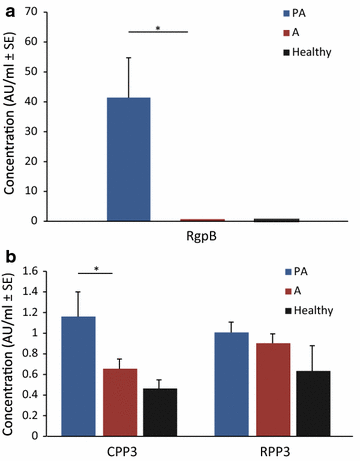Effects by periodontitis on pristane-induced arthritis in rats
- PMID: 27809921
- PMCID: PMC5094068
- DOI: 10.1186/s12967-016-1067-6
Effects by periodontitis on pristane-induced arthritis in rats
Abstract
Background: An infection-immune association of periodontal disease with rheumatoid arthritis has been suggested. This study aimed to investigate the effect of pre-existing periodontitis on the development and the immune/inflammatory response of pristane-induced arthritis.
Methods: We investigated the effect of periodontitis induced by ligature placement and Porphyromonas gingivalis (P. gingivalis) infection, in combination with Fusobacterium nucleatum to promote its colonization, on the development of pristane-induced arthritis (PIA) in rats (Dark Agouti). Disease progression and severity of periodontitis and arthritis was monitored using clinical assessment, micro-computed tomography (micro-CT)/intraoral radiographs, antibody response, the inflammatory markers such as α-1-acid glycoprotein (α-1-AGP) and c-reactive protein (CRP) as well as cytokine multiplex profiling at different time intervals after induction.
Results: Experimentally induced periodontitis manifested clinically (P < 0.05) prior to pristane injection and progressed steadily until the end of experiments (15 weeks), as compared to the non-ligated arthritis group. Injection of pristane 8 weeks after periodontitis-induction led to severe arthritis in all rats demonstrating that the severity of arthritis was not affected by the pre-existence of periodontitis. Endpoint analysis showed that 89% of the periodontitis-affected animals were positive for antibodies against arginine gingipain B and furthermore, the plasma antibody levels to a citrullinated P. gingivalis peptidylarginine deiminase (PPAD) peptide (denoted CPP3) were significantly (P < 0.05) higher in periodontitis rats with PIA. Additionally, there was a trend towards increased pro-inflammatory and anti-inflammatory cytokine levels, and increased α-1-AGP levels in plasma from periodontitis-challenged PIA rats.
Conclusions: Pre-existence of periodontitis induced antibodies against citrullinated peptide derived from PPAD in rats with PIA. However, there were no differences in the development or severity of PIA between periodontitis challenged and periodontitis free rats.
Keywords: Arginine gingipain; Citrullinated peptide; Cytokine; Inflammation; Peptidylarginine deiminase; Periodontitis; Porphyromonas gingivalis; Pristane-induced arthritis.
Figures




References
MeSH terms
Substances
LinkOut - more resources
Full Text Sources
Other Literature Sources
Molecular Biology Databases
Research Materials
Miscellaneous

